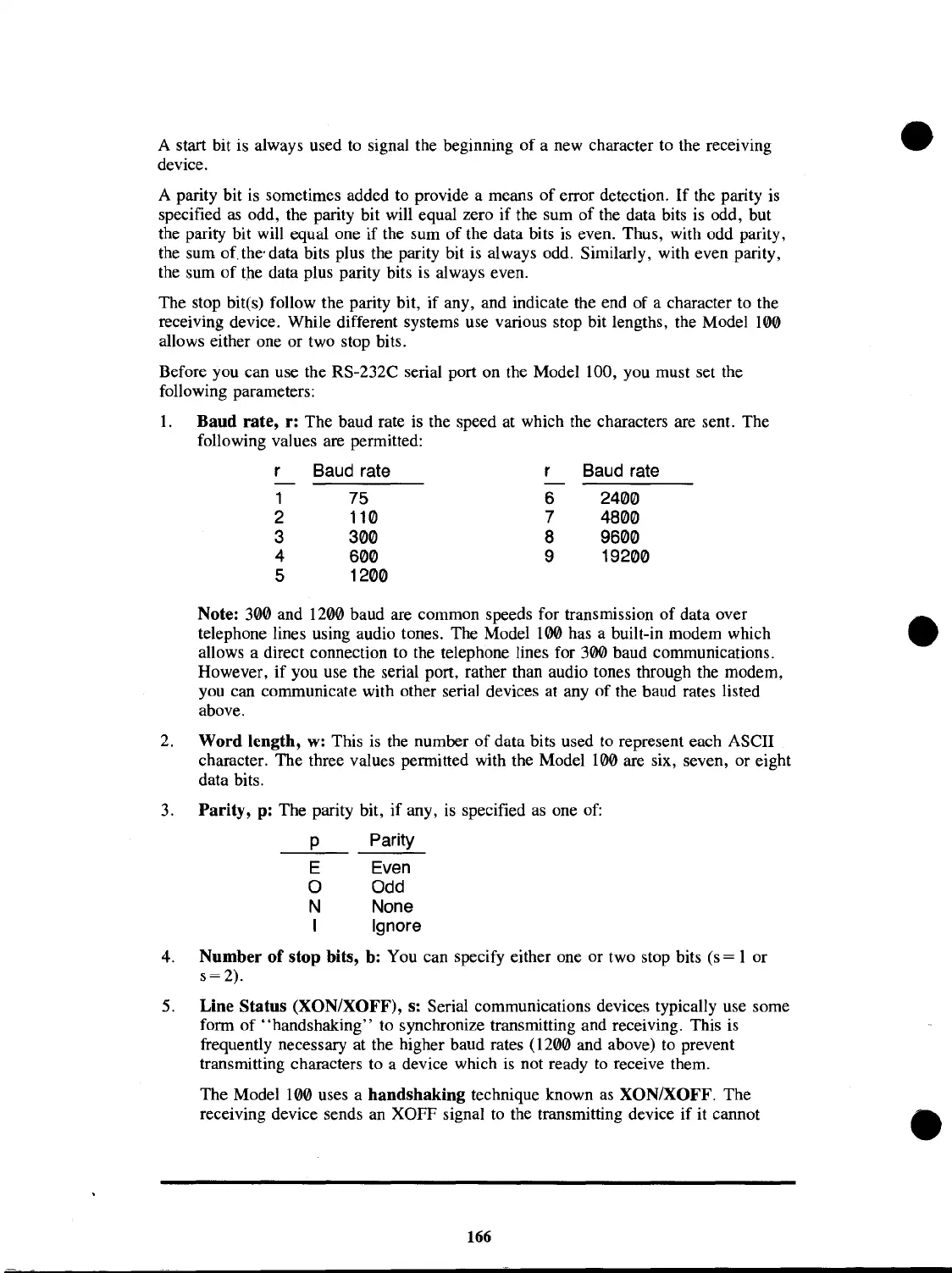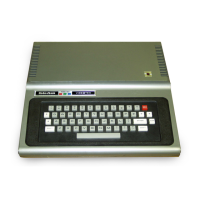A start bit is always used
to
signal the beginning
of
a new character to the receiving
device.
A parity bit
is
sometimes added to provide a means
of
error detection.
If
the parity
is
specified
as
odd, the parity bit will equal zero if the sum
of
the data bits is odd, but
the parity bit will equal one if the
sum
of
the data bits
is
even. Thus, with odd parity,
the sum
of.
the' data bits plus the parity bit
is
always odd. Similarly, with even parity,
the sum
of
the data plus parity bits is always even.
The stop bites) follow the parity bit, if any, and indicate the end of a character to the
receiving device. While different systems use various stop bit lengths, the Model
100
allows either one or two stop bits.
Before you can use the RS-232C serial port on the Model 100, you must set the
following parameters:
1.
Baud rate, r: The baud rate is the speed at which the characters are sent. The
following values are permitted:
r
Baud rate
r
Baud rate
1 75
6
2400
2
110
7
4800
3 300 8 9600
4
600
9 19200
5
1200
Note: 300 and 1200 baud are common speeds for transmission
of
data over
telephone lines using audio tones. The Model
100 has a built-in modem which
allows a direct connection to the telephone lines for
300 baud communications.
However,
if
you use the serial port, rather than audio tones through the modem,
you can communicate with other serial devices at any
of
the baud rates listed
above.
2.
Word length, w: This
is
the number
of
data bits used
to
represent each ASCII
character. The three values permitted with the Model
100 are six, seven, or eight
data bits.
3.
Parity, p: The parity bit, if any,
is
specified
as
one
of:
p Parity
E Even
o Odd
N None
I Ignore
4.
Number
of
stop bits, b: You can specify either one or two stop bits
(s=
I or
s=2).
5. Line Status (XON/XOFF), s: Serial communications devices typically use some
form
of
"handshaking" to synchronize transmitting and receiving. This
is
frequently necessary at the higher baud rates (1200 and above) to prevent
transmitting characters to a device which
is
not ready
to
receive them.
The Model 100 uses a
handshaking technique known
as
XON/XOFF. The
receiving device sends an XOFF signal
to
the transmitting device if it cannot
166

